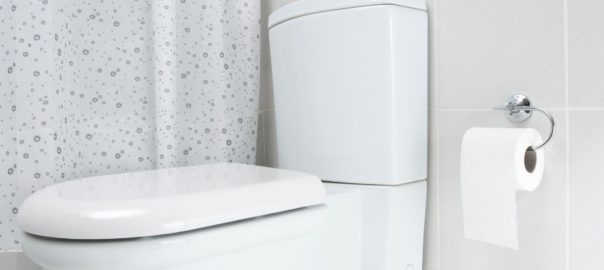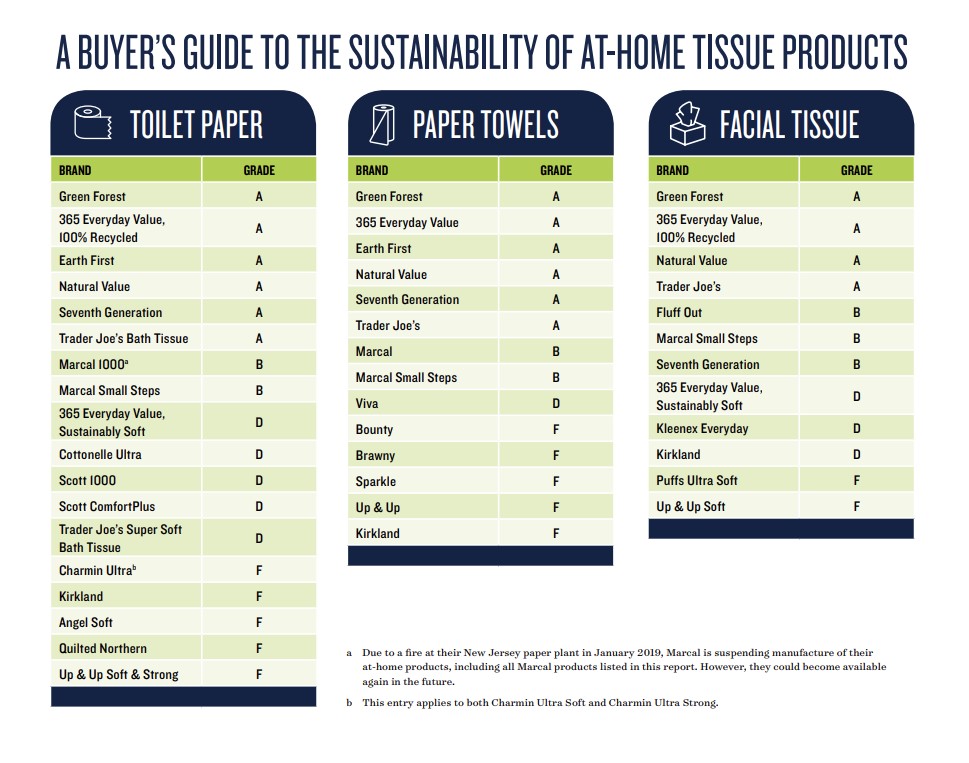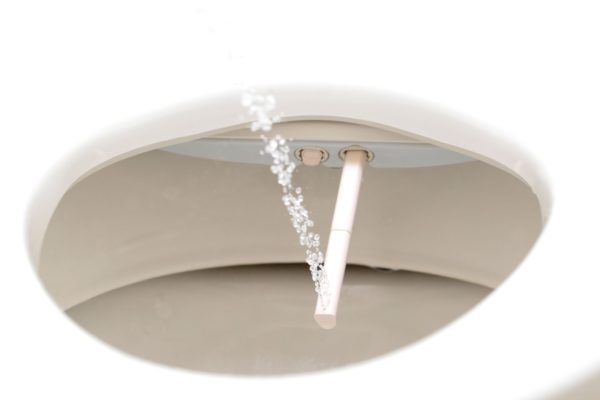The United States leads the world in toilet paper consumption. We go through something on the order of 36 billion rolls of toilet paper! Creating that much TP requires:
- Approximately 473,587,500,000 gallons of water
- 253,000 tons of chlorine
- More than 17 terawatts of electricity
That doesn’t even address how much of an impact the packaging and transportation are. And all of that TP, with all of its associated costs and environmental impact, gets flushed down the loo to be processed in a waste management plant.
Environmental impact of using toilet paper
Toilet paper is cheap and convenient but it costs planet earth a great deal. That’s why I’m sharing what you really need to know about the environmental impact of using TP.
Don’t get me wrong, I’m not opposed to it. I’m not suggesting we go back to rags, or worse yet, leaves, but there is a way to use less TP that’s good for you and the environment. Let’s start by examining the issues:
1.Forest Degradation
According to my research 27,000 trees are destroyed daily just to make toilet paper. That would be mature trees that have some height to them and which doubtless produce a fair amount of oxygen and habitat. We need our trees, anything that helps more of them avoid being pulped into paper is a good thing.
2. The carbon footprint of toilet paper made from virgin pulp
Speaking of pulp, next are all the chemicals required to take a tree and turn it into the fibers used to make the actual paper.
Creating TP using 100 percent virgin fiber generates three times as much carbon as products made from other types of pulp.
4. The process of cleaning and preparing pulp requires lots and lots of water
It takes 12 or more gallons of water to go through the process needed to make just one roll of toilet paper. That 32 roll super pack? That’s the equivalent of 364 gallons of water. Sure you’re using a little extra water when you wash before you wipe if you’re using a bidet, but I’m pretty sure it’s not 12 gallons worth.
5. Chlorine is used to bleach the pulp and turn it white
And the not so lovely finish is what it takes to make our toilet paper look white. Bleach derivatives, and in some cases formaldehyde (used to make the toilet paper stronger when exposed to water).
Recycled paper products typically use far less toxic bleaching methods, such as processed chlorine free (PCF) This bleaching process totally avoids chlorine, instead of using oxygen, ozone, and hydrogen peroxide. However these chemicals are still added to the paper that you’re using to wipe your sensitive parts.
How can you help?
Use sustainable toilet paper and get a bidet!
Recycled Toilet Paper
There are several brands of toilet paper, like Green Forest, 365 Everyday Value, Earth First, Natural Value, Seventh Generation and Tender Joe’s Bath Tissue that have minimal impact on forests. The six brands mentioned below use recycled waste paper to make toilet paper and do not use chlorine to bleach pulp.
Source: Skene J, with significant contributions from Vinyard, S. THE ISSUE WITH TISSUE: HOW AMERICANS ARE FLUSHING FORESTS DOWN THE TOILET. https://www.nrdc.org/. Published February 2019.
Bidet
It turns out that if we all switch to using a bidet, we could save 15 million trees plus hundreds of millions of gallons of water. That’s why after hearing Miki Agrawal talk at the Mindshare conference I decided to give the whole Hello Tushy bidet thing a try.
She promises that it’s easy to put together and can be attached to almost any toilet. After playing a weird solo version of toilet twister in my itty-bitty toilet space it turns out that she’s right. All it takes is a screwdriver and following the directions. Plus, it works great! Now I’m wondering why I didn’t get one sooner.
Top three benefits of using a bidet
Here in the US, we don’t tend to use bidets, but I think that’s about to change. Especially if there’s less and less tissue in each package.
Here are just a few of the top benefits of using a bidet:
- Cleaner: Because you’re rinsing the area before wiping, it’s cleaner and there’s less bacteria when you wipe
- Less tissue: By cleaning first, you use less TP. One resource I saw claimed that you could use up to 75% less toilet paper
- Eco-friendly: Less TP use means less trees being cut down to make it and less water used to create it
Cleaner, saves money, and environmentally friendly. That sounds like a triple win in my book!
I swear the more I research this stuff to answer your questions the happier I am that I purchased a HelloTushy for my home.
Join me and help reduce the impact on the environment.
Sources
Miki Agrawal - -https://mikiagrawal.com
Armstrong M. Infographic: The U.S. Leads the World in Toilet Paper Consumption. Statista Infographics. Published October 5, 2018. https://www.statista.com/chart/15676/cmo-toilet-paper-consumption/
Bidets Save 15 Million Trees Annually—So Are We Using Them? - Rinseworks".Rinseworks, 2015,https://rinseworks.com/new/bidets-can-save-15-million-trees-annually/. Accessed 20 Oct 2021."Guidance On New PFAS Reporting Rule For Manufacturers".Green Science Policy Institute, 2021, https://greensciencepolicy.org/news-events/blog/guidance-on-new-pfas-reporting-rule-for-manufacturers.
Business PK CNN. Your toilet paper roll is slimming down. CNN. Accessed March 30, 2022. https://edition.cnn.com/2022/03/08/business/toilet-paper-roll-shrinking-inflation/index.html
Skene J, with significant contributions from Vinyard, S. THE ISSUE WITH TISSUE: HOW AMERICANS ARE FLUSHING FORESTS DOWN THE TOILET. https://www.nrdc.org/. Published February 2019. https://www.nrdc.org/sites/default/files/issue-tissue-how-americans-are-flushing-forests-down-toilet-report.pdf



